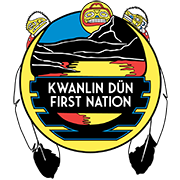The need to plan for the use of Kwanlin Dün First Nation (KDFN) land has been recognized since long before the conclusion of its treaty in 2005. The Final Agreement assures KDFN of a role in land and resource planning throughout the Traditional Territory. This includes provisions in the Final Agreement for regional land-use planning and local area planning, protected area establishment, heritage, wildlife, water, forestry and other resource management and planning.
The Self-Government Agreement enables KDFN to establish laws and to manage its settlement land. In 2014 KDFN passed the Lands and Resources Act, which contains provisions that require land to be planned to best meet the needs of the community.
In 2014-15 the KDFN government, through the Lands and Resources Department, initiated the Land Vision project to develop a guiding vision for KDFN settlement land and Traditional Territory. The purpose of the Traditional Territory Land Vision is to provide the KDFN government with direction from the community to support detailed planning for settlement lands and better equip KDFN to work with other governments throughout its Traditional Territory.
The Land Vision, completed in 2017, puts forward four main land-based goals and ensures that there is opportunity to maximize each of them.
The four goals are:
- Community Development: to provide land for KDFN residential and infrastructure needs.
- Wildlife: to conserve areas of high ecological value and maintain the health of wildlife populations.
- Heritage: to conserve areas of high heritage value while maintaining and creating opportunities for continued traditional use of the land.
- Revenue Generation: to make lands available to generate revenue for the benefit of the KDFN community.
The community provided the following key messages during the development of the Land Vision:
- Lands must be dedicated to protect important heritage areas and ensure their continued use for traditional activities.
- Certain C Lands and portions of R Blocks should be used for revenue generation.
- Remote R Blocks, and their adjacent areas, should be managed primarily for traditional uses. Developments should be minimal, with no new road access.
- Some lands should be set aside for use by future generations.
- Citizen residential needs should be met on settlement lands: higher density subdivisions within Whitehorse; and lower density residential development on road accessible R Blocks.
- KDFN Institutional and Government needs should be met largely on settlement land. Uses include administrative buildings on KDFN land within Whitehorse, and General Assembly sites, campgrounds and culture camps on KDFN land outside of Whitehorse.
Read the full Kwanlin Dün First Nation Land Vision: click here to download the document.
